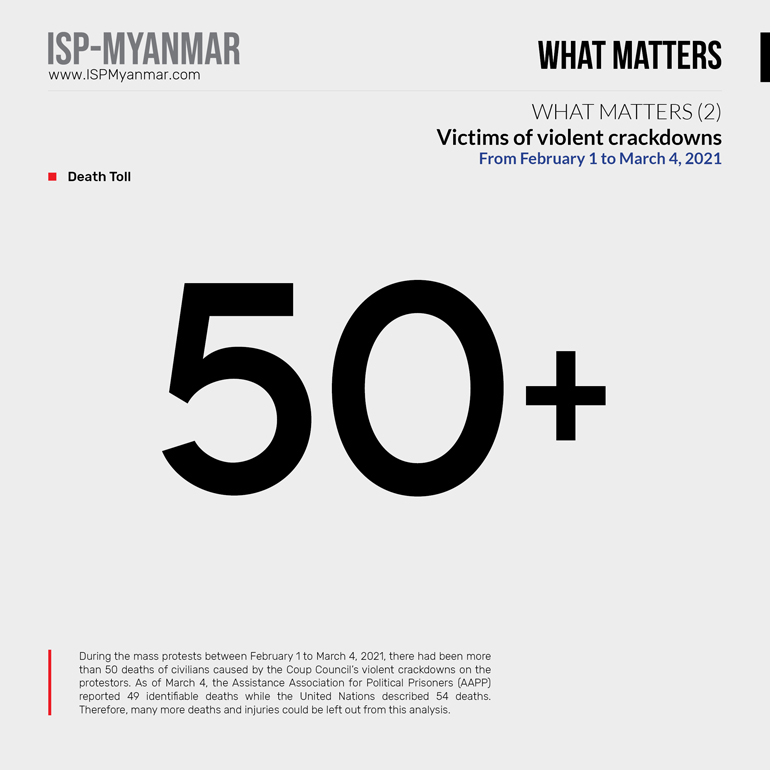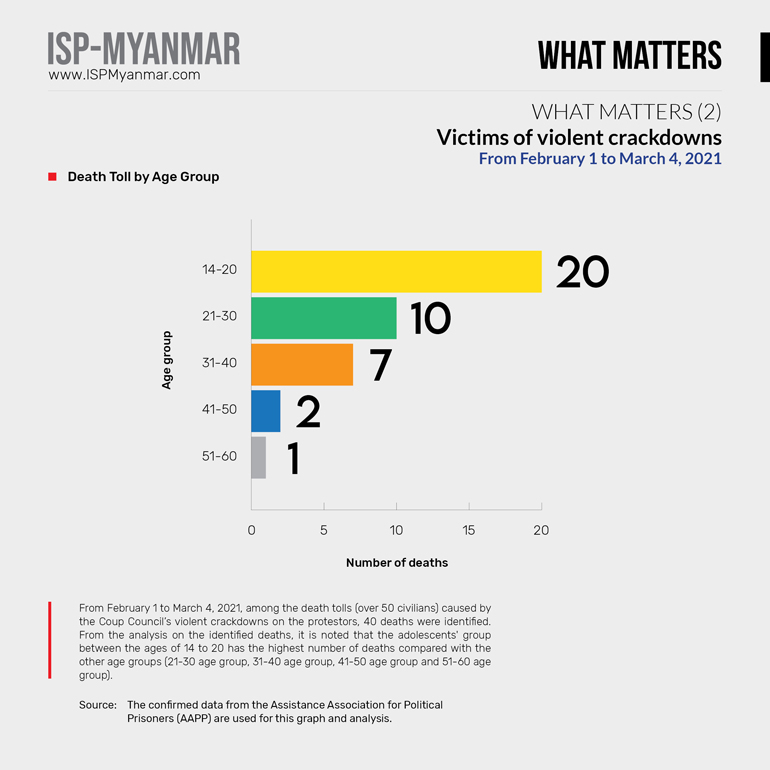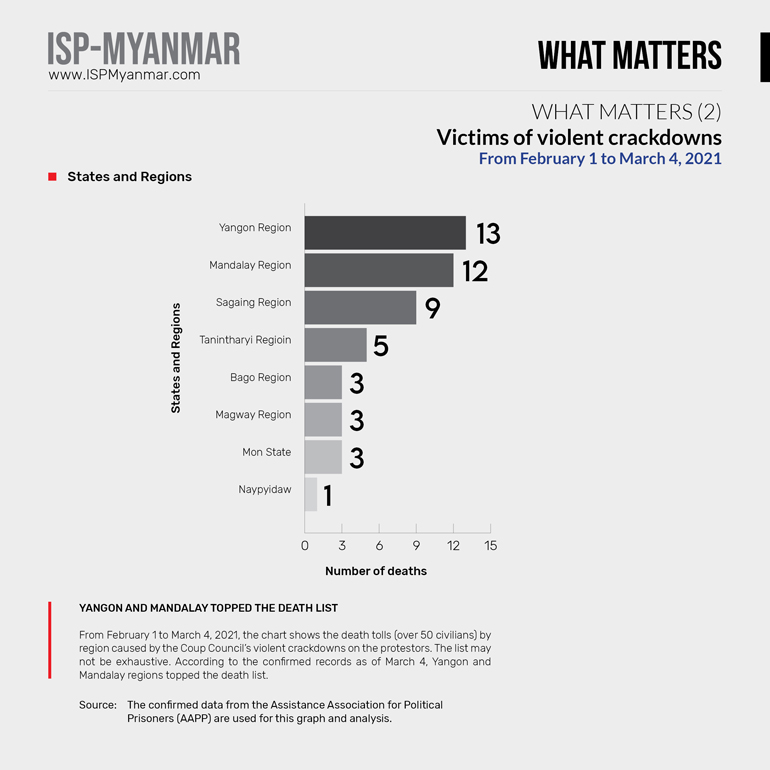(The original Burmese version was published on the ISP-Myanmar Facebook page on March 5, 2021.)





∎ Key findings in brief
Followed the February 1 military coup d’état, Myanmar has seen widespread mass protests across the country. Because of the violent crackdown by the security forces of the coup council, till now (March 4, 2021), there have been over fifty casualties. Many were also injured and human rights violation of massive human dignity violation have been widespread in the country. The Assistance Association for Political Prisoners (AAPP) recorded the personal details of the 49 victims at the moment (March 4, 2021) while there could be many more being left out on the list.
∎ Why does it matter?
By studying the number of casualties and the remaining dead bodies and body parts of the victims because of the violent crackdowns, it can be justified whether the security forces of the coup council abided by the internationally agreed rules, regulations and standards in dealing with the mass protests from the perspectives of human rights and transitional justice. Thus, it does matter to study the data collected and recorded by the AAPP.
According to the AAPP records, most of the victims of the violent crackdowns were adolescents between the age range of fourteen to twenty. Moreover, there were at least ten casualties because of deliberate headshot, as well as deaths due to the cruel beating of the head. According to the confirmed data by gender, there were forty-two male and six female casualties because of the overuse of force by the security forces. By region, the number of casualties in Yangon Region and Mandalay Region topped the list and Sagaing Region followed third place.
∎ Other relevant readings:
The Assistance Association for Political Prisoners (AAPP) has recorded data related to those arrested in connection with the protests that followed the military coup; number and cause of death; how the security personnel have dealt with mass protests; and reports on violations of human rights and dignity. Daily logs are also available on the AAPP website and Facebook pages. Information can also be sent to AAPP for those who are not yet on the list.
◉ What Matters ISP-Myanmar covers a section entitled “What Matters” that could benefit the current anti-coup mass movements through a series of research work. This section aims to introduce issues and data that should be addressed in a short, easy-to-read manner and accessible to everyone based on research findings. The introduced facts, cases, and data are intended to be a thought-provoking stimulus, but not as a definite view. The purpose is to make the data presented more accurate and complete. In this series, ISP would try to answer three questions in general: 1) what is the issue of concern?; 2) why does it matter? 3) is it relevant for Myanmar? Addressing these questions does not involve an exhaustive examination but covers the relevant elements and claims. Thus, each issue of “What Matters” provides a list of suggested readings and references for further study. In the current situation, this section will focus on research findings related to three research topics. These are: 1) research findings related to coup d’état 2) research findings on mass movements 3) research findings on how the international community (especially powerful foreign countries that can provide significant support ) intervened in military coups and the authoritarian states. The research will be based on comparative studies. Research data collected by local partner organizations will also be requested and respectfully presented in various forms from time to time.
